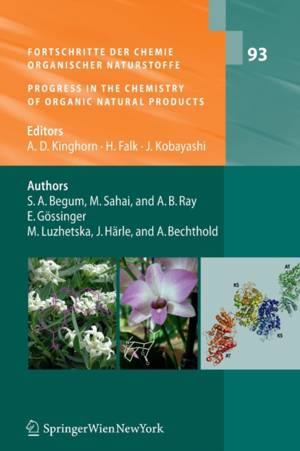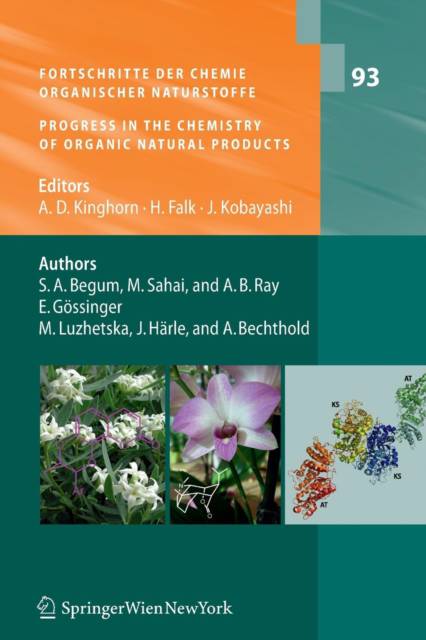
- Afhalen na 1 uur in een winkel met voorraad
- Gratis thuislevering in België vanaf € 30
- Ruim aanbod met 7 miljoen producten
- Afhalen na 1 uur in een winkel met voorraad
- Gratis thuislevering in België vanaf € 30
- Ruim aanbod met 7 miljoen producten
Zoeken
Fortschritte Der Chemie Organischer Naturstoffe / Progress in the Chemistry of Organic Natural Products, Vol. 93
Mahendra Sahai, Edda Gössinger, Marta Luzhetska, Johannes Härle, Sajeli A Begum, Anil B Ray
€ 210,95
+ 421 punten
Uitvoering
Omschrijving
Lignans, by convention, are a group of natural products that are formed by linking two phenylpropanoid units (C C units) by oxidative coupling. Most importantly, in 6 3 a lignan, two (C C units) are bound through the central carbon of their side chains, 6 3 0 i. e. the 8 and 8 positions (1, 2). The occurrence of C C -dimers, linked at sites other 6 3 0 than the 8-8 positions, is also known and these compounds have been termed neolignans (3, 4). As these two groups of compounds have close structural as well as biosynthetic relationships, they are often associated together and incorporated under the general term "lignan" (5). The diverse structural categorization of true lignans and of a few neolignans is presented in Fig. 1. Through the years, several review articles or books covering different facets of lignans, including their ch- istry (6, 7), biogenesis (8), synthesis (9), and biological activities (10) have been published. Enduring research for the investigation of secondary metabolites of plants has evidenced some compounds that are biogenetically related to true lignans or neolignans but bear some features not discerned in conventional lignans. These compounds or groups of compounds have been termed as "non-conventional lignans", and include coumarinolignans, ?avonolignans, and stilbenolignans. The non-conventional lignans, like the conventional ones, have two C C units linked 6 3 together but have additional structural features to place them also under the category of coumarins, ?avonoids, or stilbenes.
Specificaties
Betrokkenen
- Auteur(s):
- Uitgeverij:
Inhoud
- Aantal bladzijden:
- 264
- Taal:
- Engels
- Reeks:
- Reeksnummer:
- nr. 93
Eigenschappen
- Productcode (EAN):
- 9783709111079
- Verschijningsdatum:
- 5/09/2012
- Uitvoering:
- Paperback
- Formaat:
- Trade paperback (VS)
- Afmetingen:
- 155 mm x 231 mm
- Gewicht:
- 394 g

Alleen bij Standaard Boekhandel
+ 421 punten op je klantenkaart van Standaard Boekhandel
Beoordelingen
We publiceren alleen reviews die voldoen aan de voorwaarden voor reviews. Bekijk onze voorwaarden voor reviews.











